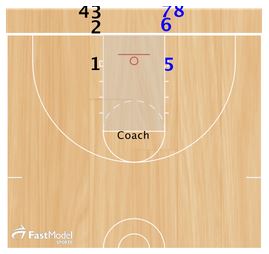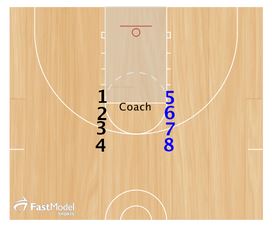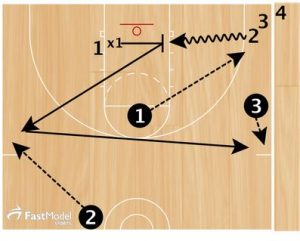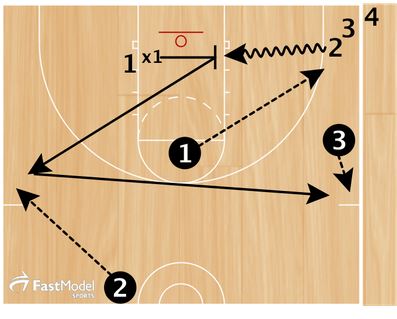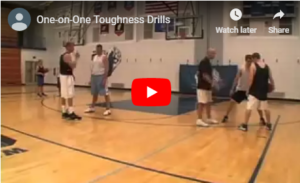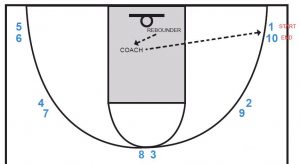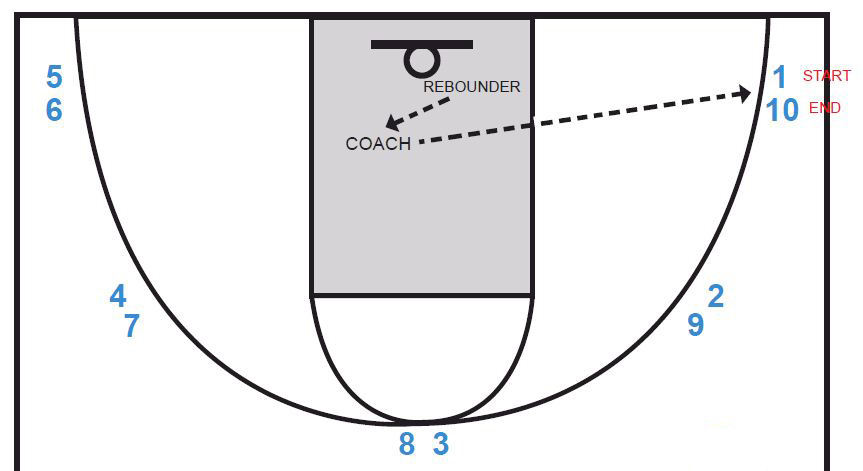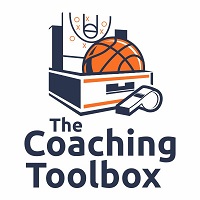I like to end practice with a segment that works on toughness and game situations. This dril is a good way to work on developing the toughness to finish at the basket.
I believe that when attacking the basket, a player’s mindset should be
1) Expect hard contact. If a player is fouled hard and then loses his or her poise, that is going to have a negative affect on the free throws.
2) I want the player looking to score the basket and not looking to only draw a foul. The official might or might not make the call, but if the ball goes in, we get two points.
These drills were originally posted on FastModel Sports Plays and Drills Library by Greg White.
Great drill from Coach Mike Jones and Coach Alan Stein at DeMatha High School. We use this to set the thermostat at practice.
(See Digrams below)
Divide players of equal size.
Coach passes to player who attacks the rim while the other player attempts to block the shot.
The offensive player has to attack strong. Do not allow them to avoid the contact.
Same set up as Frame 1 but different location.
Same set up as Frame 1 but different location.
